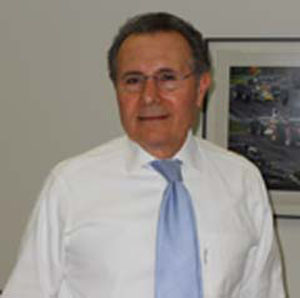The Proposal: A curfew plan to reduce juvenile crime and protect youngsters
From: Steve Kimatian, the Republican candidate for mayor
Type: Press releases and interview
Date: Aug. 18, 2009, on News 10 Now and Aug. 25, 2009
URL: http://www.steveforsyracuse.com/web/news-and-multimedia/radio.html and
http://news10now.com/region1045content/politics/meet_the_candidates/
SUMMARY: In a radio commercial from his official campaign Web site, Steve Kimatian advocates a youth curfew, similar to that of other United States cities, as the Number-One step in his five-step plan to combat crime. In an interview with News10Now reporter Bill Carey, Kimatian also promotes his plan. In advocating the curfew, Kimatian argues it will be help prevent crime and keep young people safer by keeping them off the streets during curfew hours. But juvenile curfews in other cities have produced mixed results at best.
What He Says:
In the News10Now interview:
“We should seriously consider a protective curfew for minors 16 and under. One that is based on counseling and remediation, on assistance and support. Remember, these youngsters who are teenagers up to 16, they’re the future potential gang leaders. We don’t want them to go in that path. So, if there are children, minors, underage, that are out on the streets at two in the morning, there is something wrong. … That kind of curfew would be a preventive one, would be a constructive one, and would be beneficial to those who might end up in criminal behavior.”
In the radio commercial from his Web site:
“But Steve Kimatian’s plan for a curfew is different. The Kimatian curfew doesn’t just pick up offenders, give them a ticket and turn them over to a parent or guardian. Steve Kimatian’s plan includes counseling, child protection services and common sense. It will protect kids, make our streets safer and it will work.”
The Facts
• “But Steve Kimatian’s plan for a curfew is different. The Kimatian curfew doesn’t just pick up offenders, give them a ticket and turn them over to a parent or guardian. Steve Kimatian’s plan includes counseling, child protection services and common sense.”
Kimatian says his plan is “different,” but the only aspect of his plan that he outlines as “different” is the implementation of counseling and child protection services. But cities that he says have similar curfew laws — such as Los Angeles and Toledo — also have similar counseling and child protection services.
Los Angeles, for example, has a Child Protection Section where some violators of curfew laws are referred. And in Toledo, police reach out and provide counsel to teens they pick up.
And other cities with curfews offer similar opportunities to offer guidance to the teens. Phoenix’s curfew, for example, is a jointed effort among the police, human services, and parks and recreation departments. Curfew violators are given information about recreational activities and social service agencies.
Washington, D.C., also provides teens with alternative programs and centers that include recreation activities and counseling services. And in its second year of the curfew, Rochester police sent 93 percent of its juvenile violators to the Hillside Children’s Center. There, they hoped to “better identify young people that were experiencing multiple problems and provide a more coordinated response to these youth and their families,” according to a city report on the curfew.
Overall, the theme of counseling and protection is not new in juvenile curfews across the country.
• “That kind of curfew would be a preventive one, a constructive one, beneficial to those who might end up in criminal behavior.”
• “It will protect kids, make our streets safer and it will work.”
The kind of curfew Kimatian is proposing has been tried in numerous U.S. cities as a way to combat juvenile crime. But the curfews have seen little success as a method of reducing crime, even among juveniles.
Ken Adams, a University of Central Florida professor, has reviewed 10 studies on curfew effectiveness. In an interview, Adams said the studies found that curfews do not cut juvenile crime. “The research we have indicates curfews are not effective at reducing crime,” Adams said. “And every study I’ve seen concluded the same thing.”
Professors David McDowell of the University of Illinois, Colin Lofton of Albany and Brian Wiersema of Maryland also produced a study of 57 United States cities with curfew laws. The study focused on ten crime categories, and the only categories that saw decreases in crime were burglary, larceny and simple assault. This accompanied an increase in a category like homicide.
Ken Michael Reynolds, also a professor at the University of Central Florida, investigated the New Orleans curfew law that was enacted in 1994. In a telephone interview, he called the New Orleans’ ordinance “the most restrictive curfew law in the United States.” But he found that the curfew law did not reduce crime overall or juvenile arrests over a two-year period.
Reynolds also found that crime increased during non-curfew hours. “There was no real reduction in offenses,” Reynolds said. “It simply shifted to a different part of the day.”
Conclusion
There is no empirical evidence to support Steve Kimatian’s contention that a juvenile curfew in Syracuse would make the city or juveniles safer. He describes his plan as “different” for focusing on counseling and positive reinforcement. But many cities already have these programs in place to accompany their curfews. And a strong body of research suggests that curfews have been unsuccessful in reducing crime or in keeping juveniles off the street.
(Brett LoGiurato is a junior with dual majors in political science and newspaper journalism.)
-30-



